Do you want to tour China but don't know which city is better to land in? I suggest you land in Hong Kong, where there are many international flights every day. And Hong Kong is a metropolis with many attractive spots. In this 11-day China tour from Hong Kong, you will travel from Hong Kong to Kunming, Yunnan Province. Yunnan has the most beautiful natural scenery and the most ethnic minorities in China. Here you will be amazed by the diversity of Chinese culture. At the end of the trip, you will come to Beijing, the capital of China. Here, the magnificent Forbidden City and the spectacular Great Wall will be unforgettable for your lifetime. Come and join us on this quality China tour from Hong Kong!

Welcome to China and it is very nice to meet you. Hong Kong is your first stop of travel in China. After your arrival, the local guide will meet you at the exit of the airport and take you to the hotel to rest. Everything will be organized. We will make sure you have a pleasant trip to China.
Hong Kong is one of the two special administrative regions of the People’s Republic of China, along with Macau. Comprising more than 260 islands, it is located on the southeastern side of the Pearl River Delta, bordering Guangdong Province in the north and facing the South China Sea. It is described as a city integrating Eastern and Western culture. On the street, you may see traditional Chinese shops selling Chinese herbal medicine and Buddhist paraphernalia, and you may also find theaters showing the latest Hollywood blockbuster. Apart from its inclusive culture, it is also a global center of trade and entertainment, as well as a paradise of cuisine. You can taste different varieties of Chinese cuisines, and many foreign foods, like European, American, Japanese, and Korean.
After breakfast, you will first visit Victoria Peak. A trip to Victoria Peak offers a spectacular view of Hong Kong. Victoria Peak plays host to more than 6 million visitors each year. It features the city’s oldest and most reliable public transport, the Peak Tram. Taking the Peak Tram is the best way to enjoy the scenery. There is an exhibition on the mountain, which shows the development of the tram. The exhibition is divided into different themed areas, among which the most distinctive one is the first generation of the peak tram. In addition, more than 200 precious collections, including the uniforms of the staff of the peak tram in the early years, tickets, and other exhibits related to the tram, are displayed for the public to enjoy. Viewing terraces located on the peak offers spectacular views of the Hong Kong skylines.
After visiting Victoria Peak, you will visit Aberdeen Fishing Village, which is the earliest place to develop the economy on Hong Kong Island. Up to now, hundreds of boatmen still live here, retaining the characteristics of traditional fishing villages. There are all kinds of fishing boats, seafood boats for catering, and old Chinese-style sailboats moored in the bay. To experience fishermen’s life at a close distance, you can take a sampan to enjoy the local life on the water. During the sampan trip, you can take many beautiful scenery photos.
Then you will go around the Stanley Market, located at the southern end of Hong Kong Island. The market is full of various small shops, with a wide variety of commodities, including jewelry, leathers, silk products, wool products, cotton clothes, antiques, Chinese handicrafts, and other souvenirs. In addition, there are small restaurants with Hong Kong characteristics, which attract tourists from all over the world.
Then you will be transferred to the hotel to rest.
Free Time Suggestion:
Avenue of Stars in Hong Kong is modeled on the Hollywood Walk of Fame. For praising the outstanding film workers in the Hong Kong film industry, the avenue is embedded with 73 movie celebrities’ memorial plaques and more than 30 celebrities’ handprints on the ground. The celebrities include Hong Kong’s respected filmmakers, movie stars and directors. On November 27, 2005, a bronze statue of 2 meters was built to commemorate martial arts superstar Bruce Lee in the Avenue of Stars. Walking along the Avenue of Stars, you can also find snack stalls and souvenir stalls. It is also the best place to enjoy A Symphony of Lights, Hong Kong's famous laser lighting music performance.

After breakfast, we will drive for about 40 minutes(32 kilometers) to Lantau Island, which is located in the southwest of Hong Kong. Lantau Island is the largest island in Hong Kong, China. We will take the Ngong Ping 360 Cable Car, which is the most recommended transportation to ascend the mountain. “360” in the name means that passengers can enjoy the scenery of Lantau Island at 360 degrees in the cable car cabin. Sitting in a comfortable standard cabin, you can overlook the vast sea along the way. There are two kinds of cabins, which are standard cabins and crystal cabins. Crystal cabin’s bottom is transparent, which is more suitable for tourists who want to enjoy a thrilling experience. You will take a standard cabin. Please contact us if you need to upgrade to the crystal cabin.
You will visit the Big Buddha after arriving at Ngong Ping station. The Big Buddha is the largest outdoor bronze Buddha in the world. The Buddha body is made by welding more than 200 pieces of bronze, and the lotus throne where the Buddha sits is designed to imitate the main building of the Temple of Heaven in Beijing. The Buddha statue sits on the top of 268-level stone steps. Climbing up the stairs and overlooking the endless picturesque scenery of Lantau Island and the South China Sea is even more fascinating.
Polin Monastery locates nearby the Big Buddha. It is a Buddhist building complex with abundant Tibetan scriptures. Every year, Polin Monastery holds several ritual activities. The most famous one is the Dharma Meeting to celebrate Buddha's Birthday in early April. Especially on the eighth day of Buddha's Birthday in April, a grand Buddha-bathing celebration is held, and a Buddha-bathing platform is set up outside the hall for tourists to pray.
After having lunch, we will go for a walk in Ngong Ping Village, where you can buy specialties, including various handicrafts. You will also find a variety of street performances, such as martial arts, juggling, and other wonderful performances.
Optional Activity:
If you want to explore further after visiting all these attractions, you can pay a visit to Tai O Fishing Village at the northwest end of Lantau Island. Tai O village was once a major fishing port and garrison town in Hong Kong. Nowadays, there is no garrison in Tai O, only a quiet and leisurely fishing village remains. The village is separated by a river, with shacks built by fishermen more than 100 years ago on both sides of the river bank. The shacks are built on wooden pillars erected on the water surface. Fishermen often go in and out by sampans, making Tai O enjoy the reputation of “Venice of the East”. You can also choose to visit by sampan.
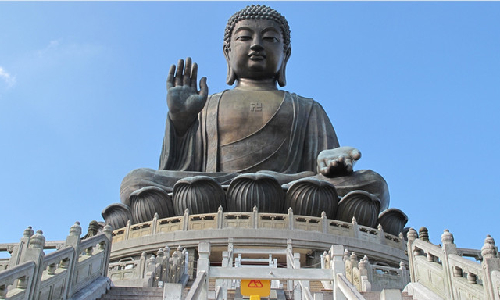

 Kunming
Kunming Your tour in Hong Kong is coming to an end. You will be transferred to the West Kowloon Railway Station and take the estimated high-speed train G408 12:05/19:48 to Kunming, the capital city of Yunnan Province. Your local guide in Kunming will wait for you at the station. After picking you up, your guide will escort you to the hotel.
As the capital city of Yunnan Province, Kunming is a good place to travel all year round. Flowers bloom all year round in this city, which makes it have another name called “Spring City”. Kunming is also a multi-ethnic city, inhabited by 26 nationalities. Whether it is the etiquette of treating people, the unique diet, the colorful costumes, and the residential buildings with different styles, you can feel the distinctive national characteristics in this city. The famous Torch Festival of the Yi people, the Songkran Festival of the Dai people, and many other characteristic festivals make you feel excited.
 Dali
Dali You will first visit Stone Forest after having breakfast. Stone Forest is located in the southeast of Kunming, 90 kilometers away. It will take two hours to get there. On hot days, the highest temperature here is basically kept below 28℃, so you don’t need to worry about the scorching weather. Stone Forest features karst landforms which are most concentrated in China. Stone Forest formed 270 million years ago, with unique features of mountains, rivers, as well as scattered peaks, caves, lakes, waterfalls, and underground rivers. The best viewing place here is Wangfeng Pavilion, where you can overview the Stone Forest. There are many strange rocks all around, some of which even reach 40 meters high in different shapes.
After having lunch, you will go for a visit to Green Lake Park. It is an urban leisure park to provide space for citizens to organize activities or do morning exercises. It used to be a bay along Dianchi Lake, the largest freshwater lake in Yunnan. Its clear water makes it enjoy the laudatory name of “Jade in the City”. Since 1985, a large number of red-billed gulls have flown from Siberia to Kunming every winter, and inhabit Green Lake, attracting countless visitors. You can feed the red-billed gull while walking along the bridge. In addition to the lake, there are amusement parks, tea gardens, and some ancient buildings in the park, like the pavilions built during the Tang Dynasty (618-907). If you are lucky, you will also see many tourists and residents in national costumes dancing or having fun here.
Then you will be transferred to the train station and take the estimated high-speed train G2848 18:40/20:41 to Dali, another picturesque city in Yunnan Province. Your guide in Dali will pick you up at the station and take you to the hotel for a rest.
Dali is an autonomous prefecture in Yunnan Province, inhabited by 26 ethnic groups, such as Han, Bai, Yi, Hui, Tibetan, and Naxi nationalities. It is famous for its natural scenery, rich cultural relics and unique ethnic customs, attracting countless Chinese and foreign tourists.
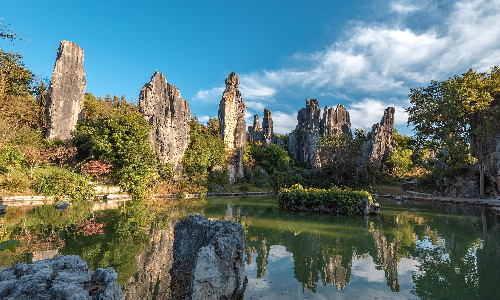
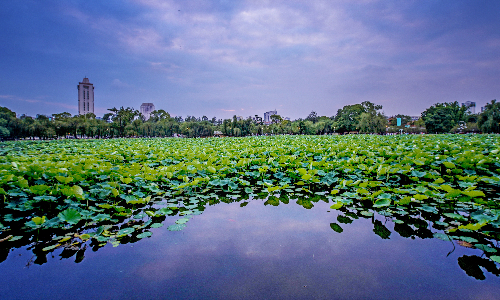
 Lijiang
Lijiang After breakfast, we will drive about 40 kilometers northward to Xizhou Village for about an hour. Xizhou is an ancient village that is well preserved. This ancient town with a history of thousands of years preserves the largest number of Bai residential buildings and the oldest folk customs. What is even rarer is that this village still maintains ancient farming civilization. If you want to experience the long-lost pastoral scenery, Xizhou Village will satisfy all your imaginations. Xizhou Village has numerous cultural relics, including large and small monasteries, ancient archways, and bridges with national styles. Most of the ancient dwellings in the village are built in the Ming(1368-1644) and Qing(1636-1912) Dynasties. There are also a variety of folk crafts, such as tie-dyeing, embroidery, and knitting in the village.
Then we will drive south for about an hour along Erhai Lake. Erhai Lake is a well-known tourist attraction in Dali. Up to now, more than 30 Neolithic sites have been discovered in Erhai Lake and its surroundings. Due to its crystal-clear water, it has been called “flawless jade”. Legend has it that there is a huge jade cabbage growing in the lake. The water of the lake is just the liquid gushing from the jade cabbage.
There are three major islands in Erhai Lake, namely Jinsuo Island, Xiaoputuo Island, and Nanzhao Island, each with its own customs and characteristics. Jinsuo Island is a famous Neolithic site where the cave of Yulong Palace is very charming. Xiaoputuo Island is in the east of Erhai Lake, which can be said to be a “pocket island”. Its shape is very similar to a seal. Legend has it that there are many dragons in Erhai Lake, which often set off violent winds and waves. This island is the seal of Guanyin Bodhisattva used to suppress dragons. Like other islands in Erhai Lake, Nanzhao Island is also composed of limestone. There are many caves on the island, the largest of which is called Bat Cave, with an area of more than 60 square meters.
After having lunch, we will visit Dali Ancient Town. Dali Ancient Town was founded in 1382 in the Ming Dynasty. There are many cultural relics and historical sites in the town, and the ancient buildings of the town are basically preserved. Five main streets are running through the town from south to north and eight streets running through from west to east. In the 1990s, the town became a major tourist town. There are streets crowded with Chinese and Western flavor shops, jewelry stores, antique shops, tie-dye shops, and galleries. Fuxing Road in this ancient town evolved into a commercial pedestrian street offering tie-dyed clothing, silver ornaments, marble handicrafts, Burmese jade, Pu’er tea, and many other local specialties. You can also climb up the city wall where you can overlook Dali Ancient Town and Erhai Lake.
Then we will drive northward 150 kilometers for about 2.5 hours to Lijiang, where your accommodation is arranged.
Lijiang is a famous tourist city that was ever an important passage of the ancient Southern Silk Road. It houses three world heritages, the world cultural heritage Lijiang Ancient Town, the world natural heritage Three Parallel Rivers of Yunnan Protected Areas, and the Memory of the World UNESCO Dongba classics of Naxi nationality. Lijiang is rich in tourism resources, with 104 tourist attractions, including Jade Dragon Snow Mountain, Lijiang Ancient Town, Baisha Village, and Shuhe Ancient Town.
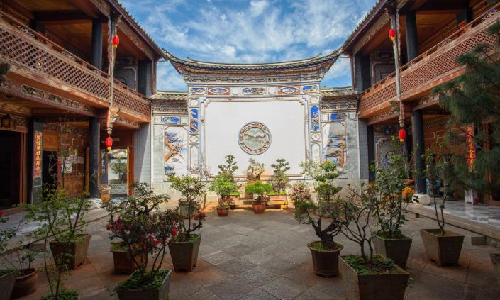

After breakfast, we will take you to the Jade Dragon Snow Mountain. There are three kinds of cable ways (small ones, medium ones and large ones) to reach different point of the mountain. We will take a cable car (small one) to Spruce Meadow. The cable car has a fully enclosed luxury cabin, which is safe and comfortable. Spruce Meadow is halfway up the snow mountain, from where you can get a beautiful view of the mountain. After getting off the cable car, you will pass through a primeval forest to enjoy the scenery of the alpine meadow. The meadow is a huge meadow hidden in the spruce forest, with an altitude of 3,240 meters. More particularly, there is a beautiful love legend here. According to legend, a couple of Naxi people once died for love here, and since then this meadow has been called “die-for-love land” by local people.
At the foot of Jade Dragon Snow Mountain, you will visit Blue Moon Valley. The Blue Moon Valley is named after the blue water of lakes and the crescent shape of the valley. The water in the lakes here comes from the melting water of glacier snow on the mountain. The mud at the bottom of the lake is white. When it rains, the mud will be stirred up and the water will turn white. After the rain stops, the water will gradually turn back to blue, which is very magical.
After having breakfast, we will drive southward to Baisha Village. This village is the best place to learn about Dongba culture(an ancient culture of Naxi people) and primitive Naxi ancient villages. Baisha Village is the original settlement of Naxi nationality in Lijiang. The ancient buildings in the town remain the same for many years. Standing on the street and looking up, you can see the Jade Dragon Snow Mountain in the distance. Baisha Mural Paintings is the most famous cultural heritage in Baisha Village and a good material to learn about Dongba culture. Baisha Mural Paintings is the product of Naxi culture in the Ming Dynasty (1368-1644), which is an extremely precious cultural relic.
Shuhe Ancient Town is another famous ancient town in the suburb of Lijiang, only 5 kilometers away from Baisha Village. We will drive southward for about 15 minutes to get there. The town is surrounded by mountains and rivers, with ancient buildings and unique alleys. Qinglong Bridge in the town was built in the Ming Dynasty, which has a history of more than 400 years. You will also find restaurants, cafes, and shops selling clothes or handicrafts on the street. Along the street, there are musicians playing national musical instruments, and occasionally, there are local people wearing national costumes. Besides, tie-dyeing is a traditional folk craft of the Bai and Yi people in Lijiang. You will also see the dye-factory yard, where there are many dyed fabrics, including tie-dyed fabrics and batik fabrics.


 Beijing
Beijing Today, you will visit Lijiang Ancient Town after having breakfast. The town has a very long history, which can be traced back to the end of the Song Dynasty (960-1279) and the beginning of the Yuan Dynasty (1271-1368). In addition to the landscape of bridges and flowing streams, the main attractions are Sifang Street Square, Lion Hill, and Mufu Palace. Sifang Street Square is the center of the town. During the Ming and Qing Dynasties, Sifang Street gathered businessmen and literati from all over the world. Moreover, the number of cultural relics and historic sites in Sifang Street is also very large, and the buildings basically keep the characteristics of the Ming and Qing architecture. Lion Hill is the highest place in the town, where you can have a bird’s-eye view of all dwellings there. Mufu Palace, commonly known as Mu’s family, is located at the foot of Lion Hill and retains the ancient architectural style.
Your tour in Yunan is coming to an end. After having lunch, you will be escorted to the airport and take the estimated flight CA1484 16:15/20:00 to Beijing. Your guide in Beijing is waiting for you and will take you to the hotel for a rest.
As the capital of China, Beijing has a 3,000-year history. The old city walls have been replaced by ring roads, and many of the old residential districts with alleys and courtyard houses have been turned into high-rising hotels, office buildings, and department stores. It enjoys abundant historical and cultural relics, such as the Forbidden City, the Summer Palace, and the Great Wall.
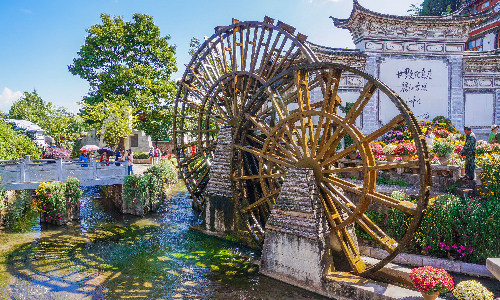

Your tour in Beijing will start from Tian’anmen Square, which is located in the center of Beijing. The floor of the square is all paved with light-colored granite strips processed by special technology. In the center stands the Monument to the People’s Heroes and the solemn Chairman Mao Memorial Hall. Tian’anmen Gate Tower in Tian’anmen Square is the main entrance of the Forbidden City in the Ming and Qing Dynasties. There are five arched doors under the Tian’anmen Gate Tower. The door in the middle is the largest, which is located on the central axis of Beijing. In the past, only the emperor could enter through the middle archway. Zhengyangmen Gate is the southernmost tip of Tian’anmen Square.
Then you will walk around the Forbidden City (closed each Monday), which was built in the Ming Dynasty (1368-1644). A total of 24 emperors used to live in the Forbidden City, which is the symbol of supreme power status in ancient times. It is an art treasure housing more than 1.8 million collections, mainly including the palace building relics and ancient classics. The buildings in the Forbidden City are mainly divided into two parts: the outer court and the inner court. The inner court includes the palaces where emperors and empresses lived. The outer court centers on the Hall of Supreme Harmony, Hall of Central Harmony, and Hall of Preserving Harmony, which are the places where the state holds great ceremonies. When the emperor celebrates his birthday, enthronement, or wedding, a grand ceremony will be held in the Hall of Supreme Harmony. In the Ming and Qing Dynasties, before the ceremonies, the emperor had to take a short rest in the Hall of Central Harmony before going to the Hall of Supreme Harmony, and received congratulations from the ministers. In the Ming Dynasty, the emperor would hold a banquet to entertain civil and military officers in the Hall of Preserving Harmony at the end of the year. Besides these major halls, there are more than 70 large and small palaces and more than 9,000 houses.
After that, you will visit Jingshan Park, next to the Forbidden City. Jingshan Park boasts towering old trees, magnificent halls, a variety of peonies and cultural activities. There are five pavilions on the mountain of the park. Wanchun Pavilion was once the highest point in the center of Beijing, enjoying the best place to overlook the panoramic view of the Forbidden City. Standing at the pavilion, you can take a perfect picture of the Forbidden City.
During lunchtime, you will taste Beijing food. After that, you will go around the Summer Palace, an ancient imperial garden in Beijing. In 1750 in the Qing Dynasty, Emperor Qianlong built the garden to show his filial respect to his mother. The garden was named Qingyi Garden originally, with Longevity Hill and Kunming Lake as its main two parts. In 1888, Emperor Guangxu rebuilt it and renamed it the Summer Palace. There are more than 3,000 garden buildings in various styles, which can be roughly divided into three parts: administrative, living and sightseeing. The administrative area centers on the Hall of Benevolence and Longevity where Empress Dowager Cixi and Emperor Guangxu once met with foreign guests. At the foot of the Longevity Hill is a corridor with a length of more than 700 meters. There are more than 8,000 colorful paintings of mythological figures, flowers and birds on the beam. The corridor connects Longevity Hill and Kunming Lake. Walking through the corridor, you can imagine that the ancient emperors and empresses did the same thing in the same place with you.


Today we will drive to Ming Tombs, which is located in the northwest of Beijing city. It is about 50 kilometers away and we will drive about an hour to get there. Ming 13 Tombs were named after the burial of 13 emperors in the Ming Dynasty. Besides emperors, 23 queens and numerous concubines, princes, princesses, and eunuchs were also buried here. The Sacred Way is the main passage leading to the Ming 13 Tombs. The total length of the road is about 7 kilometers. On the way to the tomb, Stone Memorial Arch, Dismounting Stele, Great Red Gate, Stele Pavilion, Stone Sculptures, Dragon-Phoenix Gate and Seven-Arch Bridge are laid out in turn from the south to north. The statues on both sides of the Sacred Way, which are collectively called Stone Statues, have different postures. For instance, two pairs of stone horses are placed with one pair crouching and the other pair standing. The horse was an important part of royal honor guards in ancient times, representing the dignity and majesty of the emperors.
After visiting the Sacred Way, we will drive to the Chang Tomb, which is the most well-preserved tomb of the Ming 13 Tombs. It is the first tomb of 13 tombs where Emperor Zhu Di, the third emperor of the Ming Dynasty, and Empress Xu are buried. The way to Chang Tomb also becomes the central axis of the whole tomb area.
In the afternoon, we will drive northeast for about an hour (40 KM) to Mutianyu Great Wall. It is one part of the famous Great Wall in Beijing. You can choose to take the cable car up and down the mountain where the Great Wall locates. Or you can take a chairlift to ascend the mountain and take a toboggan to descend the mountain. Please note that the toboggan can only be taken by individuals under 60 years old for safety. There are famous attractions, like the Big Corner Building. The Big Corner Building is a big enemy tower building in Mutianyu Great Wall. It is in the commanding height, where you can overlook the Mutianyu Great Wall.
On the way back to the hotel, we will pass by the National Swimming Center “Water Cube” and National Stadium “Bird’s Nest”, which are the main swimming pool and stadium built for the 2008 Summer Olympic Games. Both are located in Beijing Olympic Park. Here you can take pictures when passing by them.
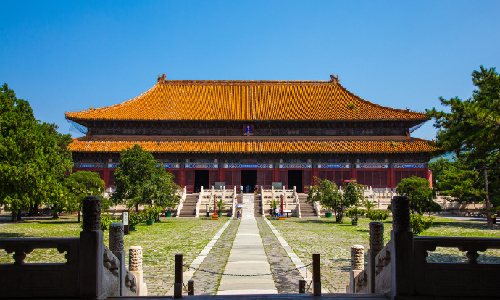

It is time to say goodbye to China. We will take you to the airport according to your flight schedule. We are pleased to see you next time.
Editor: Liu Tianhua
Proofreader: Summer Hou
| City | Five Star hotel list | Four Star hotel list |
|---|---|---|
| Hong Kong | Harbour Grand Kowloon | Harbour Plaza North Point Hotel |
| Kunming | Grand Park Kunming | UChoice Hotel |
| Dali | The One Hotels & Resorts | Landscape Hotel |
| Lijiang | Wonderport International Hotel | Lijiang Wangfu Hotel |
| Beijing | Sunworld Dynasty Hotel Beijing Wangfujing | Sunworld Hotel Wangfujing |
 |
![]() About your child or infant, please contact us for a discounted price.
About your child or infant, please contact us for a discounted price.



We started with a few days in Beijing & ended in Shanghai, from where we visited the Forbidden City and Great Wall. In between we visited Terra Cotta Warriors Museum, Panda Base, Shanghai Disneyland.

We had a wonderful holiday in China which will remain long in the memory. China is a breathtakingly beautiful country full of splendid temples and palaces, mountains and rivers, peaceful rural scenes and bustling shopping streets.
 QUICK ENQUIRY
QUICK ENQUIRY